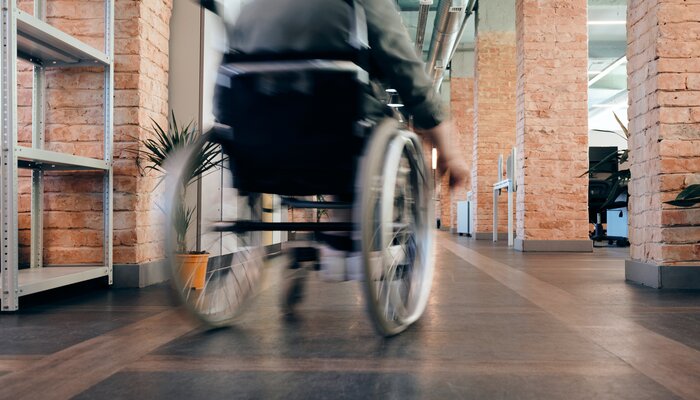People sometimes confuse learning disabilityA disorder in one or more of the basic processes involved in understanding or using language, spoken... with autism and while the two may appear to overlap, they are actually dissimilar in many ways. Talking to the experts in the field, we have put together their views and here is all you need to know for better understanding the differences;
- Defining Autism and Learning Disability
The most substantial difference between autism and a learning disability comes from the very definition of autism spectrum disorder and a learning disability. Autism is classified as a combination of social communication deficits and restricted interests and routines. However, a learning disability is defined as a substantial difficulty in any number of academic areas. An autistic child may be great at academic skills, but struggle to engage with peers. A child with a learning disability may not be able to do math easily or read fluently, but they may have many friends.
- Area of Impairments
The main difference is in the area of impairments. A child with a learning disability is often hard to distinguish from typically developing peers until you have them work on an academic problem that is within their disability criteria. However, a child with autism may be easier to identify amongst a group of peers because they will be “quirky”. They may have a hard time with social exchanges (back and forth communication) or be stuck on a singular topic. Children with autism may not have any difficulty in academics when a material is presented to them in concrete, visual, and easy-to-understand ways.
According to the DSM-5 (the authoritative document published by the American Psychiatric Association), a learning disability is a persistent difficulty during the school years with reading, writing, math, or other areas of schooling. A person with a learning disability performs well below average in some or all academic areas.
Autism is a broad spectrum that encompasses individuals that have mild symptoms all the way to those who have severe symptoms. Their impairments include difficulty with social communication, language, and behavioral and emotional challenges.
Kassie Hanson is a pediatric speech-language pathologist and a mom of two. She is also the founder of Talk 2 Me Mama, where she provides her expertise as a professional and her experience as a mom to connect with parents of small children. She has worked with many children who have been diagnosed with both autism and/or a learning disability.
- Social Deficits and Maladaptive Behaviors
The primary differences between individuals with autism and individuals with learning disabilities are social deficits and maladaptive behaviors. Individuals with autism typically show a lack of appropriate social skills needed to interact with other individuals. These skills must be explicitly taught rather than observationally learned. Students with learning disabilities, however, are able to learn these skills by observation alone without explicit instruction.
In addition, individuals with autism often display restrictive and repetitive behaviors, stereotypy, and have very restricted interests. More severe cases of autism can also include aggressive behavior, nonverbal communication, and self-injurious behavior. Individuals with learning disabilities often have significant deficits in one or more academic content areas but do not display any of the maladaptive behaviors described above.
Brianna Leonhard, Founder of Third Row Adventures. Brianna was a special educationCustomized educational programs designed to meet the needs of students with disabilities. teacher in a public school for 5 years. She exclusively served students with Autism in the self-contained setting at the elementary level. She is also a current board-certified behavior analyst and has prior experience conducting behavioral therapyTherapy aimed at modifying harmful behaviors and developing positive behaviors, often used for condi... for individuals with autism in the home and clinical settings.
- Autism is a Neurodevelopmental Condition
Autism is a neurodevelopmental condition, which means that an autistic person may have social and communication differences when compared to a non-autistic person. Some autistic people also have learning differences like dyslexiaA learning disorder characterized by difficulty reading due to problems identifying speech sounds an..., dyscalculia, intellectual disabilityA disability characterized by significant limitations in both intellectual functioning and adaptive ..., etc., but at least half of people with autism have no learning differences at all. We may have different ways of thinking and communicating than non-autistic people, and sometimes need social and communication supports, but many of us do not require special education or learning supports.
Danielle Sullivan is an autistic neurodiversityThe concept that neurological differences, such as autism or ADHD, are natural variations in the hum... advocate, life coach, and host of the Neurodiverging Podcast.
While individuals with autism spectrum disorder (ASD)A developmental disorder that affects communication, behavior, and social interaction. may have learning differences, children with learning disabilities do not necessarily have autism.
- Sensory Processing
One reason why the two can be confused is that both may result in sensory processing difficulties, emotional dysregulation, and poor social skills. For example, both those with ASD and receptive language deficits may have difficulty reading non-verbal social cues and understanding non-literal communication such as puns and sarcasm.
- Learning Disability
Learning disability is a general term that encompasses difficulties with learning, most often related to reading, writing, and math. It is not that those with learning disabilities cannot learn; it is that they learn differently than the general population and may need different methods of instruction to understand, organize and output the information they are receiving. It has nothing to do with intelligence, motivation and parenting.
- Neurodevelopmental Disorder
Autism is a neurodevelopmental disorder whose primary symptoms are persistent deficits in social communication and interaction and restricted, repetitive patterns of behavior, interests, or activities. Those with ASD may or may not have an intellectual and language impairmentA loss or abnormality of a body structure or function, whether physical, mental, or sensory, often a.... Autism exists along a spectrum which means that individuals diagnosed with autism can present very differently, from highly impaired, requiring ongoing assistance, to high functioning, highly intelligent individuals who require minimal intervention.
- Social Interactions and Communication
The main challenges for those with ASD involve social interactions and communication. This is not necessarily the case for those with learning disabilities. If it is, these difficulties are due to learning challenges such as a receptive language or non-verbal processing disability.
Because of these overlaps, a thorough evaluation resulting in an accurate diagnosis completed as early as possible is essential. Once a differential diagnosis is made, individualized strategies and interventions can be identified that will help the child best develop and progress.
All of these are part of high incidence disabilities, visit our page to learn more.
Frequently Asked Questions:
What are the key differences between autism and learning disabilities?
Autism is a developmental disorder that affects communication, social interaction, and behavior. Individuals with autism may have difficulty understanding social cues, forming relationships, and expressing themselves. Learning disabilities, on the other hand, are neurologically-based conditions that impact specific cognitive processes related to reading, writing, and math. While individuals with learning disabilities may struggle academically, they typically do not have the same social and communication challenges as those with autism.
Can a person have both autism and a learning disability?
Yes, it is possible for a person to have both autism and a learning disability. These conditions can co-occur, and a comprehensive evaluation by a professional is necessary to accurately diagnose and determine appropriate interventions for the individual.
How can professionals determine if a child has autism, a learning disability, or both?
A thorough assessment by a multidisciplinary team, including psychologists, therapists, and educators, is necessary to determine whether a child has autism, a learning disability, or both. This assessment typically includes interviews, observations, and standardized tests to evaluate the child's cognitive, social, emotional, and academic functioning. It is crucial to obtain an accurate diagnosis to develop an appropriate intervention plan tailored to the child's specific needs.
Dr. Andy Kind-Rubin is a licensed clinical psychologist and certified school psychologist who has worked in the field of child and family mental health for 30+ years. Dr. Kind-Rubin has worked in outpatient clinics, inpatient hospitals, partial hospital programs, schools, and private practice settings. Over the past twenty-two years, he has been the Chief Clinical Officer and Vice President of Clinical Services at Child Guidance Resource Centers.






